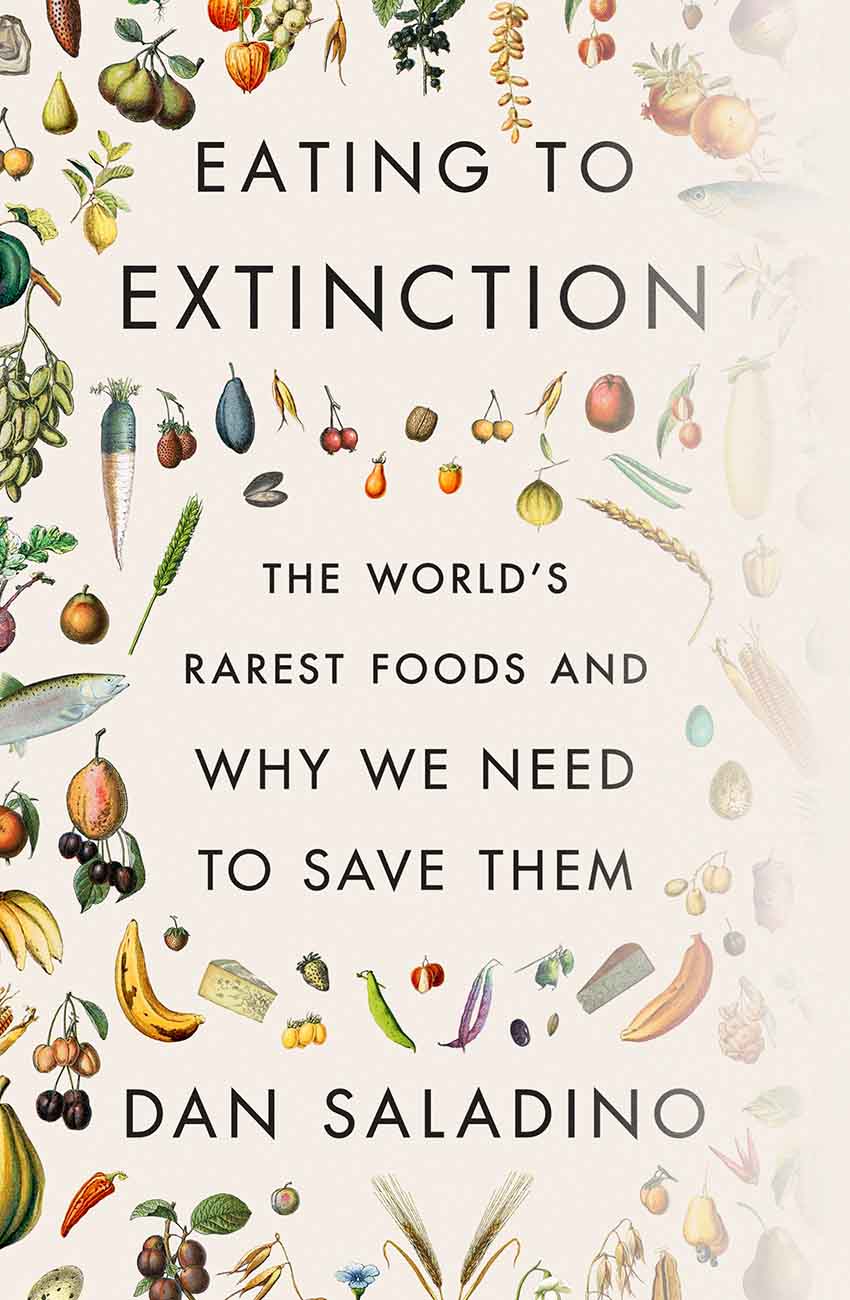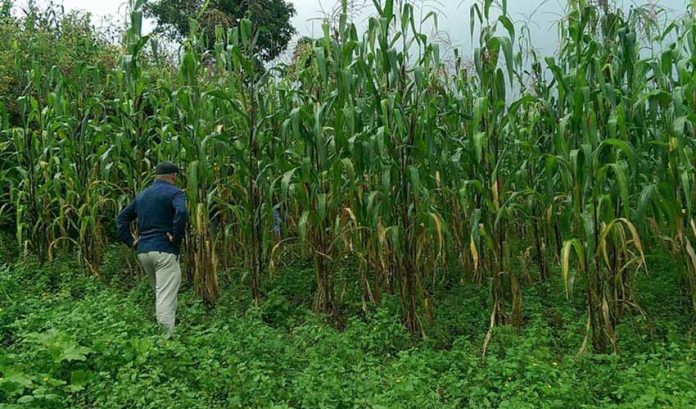Widely considered the birthplace of maize, Mexico features in two new books about this ancient, beloved and important crop, which has been the focus of controversy and polemic here in recent years.
Used in multiple ways, from tamales to beer to popping corn, maize is nevertheless at risk of losing its diversity.
Endangered Maize: Industrial Agriculture and the Crisis of Extinction, by University of Cambridge scholar Helen Anne Curry, is a deep dive into preservation efforts. BBC food journalist Dan Saladino’s Eating to Extinction: The World’s Rarest Foods and Why We Need to Save Them, which examines foods imperiled around the globe, looks at the unusual Oloton self-fertilizing maize that grows in the mountains of Oaxaca.
Each author approaches their narrative from the perspective of loss of indigenous food varieties and attempts at conservation.

“Even though I focus on one … unique and distinct global commodity — corn — the story I tell here about maize is actually relevant to understanding this broader story,” said Curry, the Peter Lipton Lecturer in History of Modern Science and Technology. “It’s not just varieties of maize cultivated in different parts of the world, especially Latin America – there are threats that bear on many different crops in many different parts of the world.”
Saladino is also concerned about endangered foods – of which there are 5,000 from 130 countries, according to the Ark of Taste catalog on the website for Slow Food USA.
For the book, he picked 35, including a sweet honey rich in protein because of the larvae within it, and an unpasteurized cheese from Albania with a lemony taste from wild bacteria. Individuals he interviewed included a Palestinian activist named Vivien Sansour, who was inspired to create a seed library in the West Bank after attending a conference in Mexico and learning Subcomandante Marcos’ maxim, “sin maiz, no hay pais” (without maize there is no country).
Saladino said that there are different reasons why foods are becoming endangered. “Some foods are being impacted because land use has changed,” he said. “Some are being impacted by lost skills, others because of climate change, others because of conflicts.”

“Many people are surprised to learn that one-third of the world’s wheat globally today originates in the Black Sea region of Ukraine and Russia,” he said by way of example. “Even if the war does not directly impact the supply of the wheat, global food production will be heavily influenced.”
Global production of corn goes back to the 19th and 20th centuries: the crop was hybridized in the U.S. In Germany, the Haber-Bosch process created synthetic fertilizer. More recently, transgenic varieties have been introduced. It’s all added up to skyrocketing production.
“Part of it is the significant breeding that’s occurred, and the resulting change of yield we’ve seen over time. Genetic changes achieved through various breeding practices have created the best possible combination of genetic material to survive in varied conditions.” She listed other, more specific factors – “what kind of fertilizer, how often they’re irrigated … It’s not all about genetic changes.”
While Saladino said that attempts to ramp up production have been done “for a good reason,” as a society, we’ve not “put the brakes on wanting more and more yield.”

“At the same time, we’ve ignored all the other factors at play, the impact by the system on diversity, soil, water use, the risk you embark [upon] in manufacturing very high-yield corn, the risk you find in terms of disease,” he said.
The Western world, he notes, has a history of ignoring the full picture: when the conquistadors arrived in Mexico, they were entranced with maize but ignored how it was grown. It was planted using the indigenous milpa system, alongside a nutritious complement of crops – squash and beans.
Europeans ate maize in isolation and as a result, suffered from the disease pellagra. “I think one of the big ideas in the book is the complexity that exists in indigenous traditions or food systems that many people fail to realize – in many cases, still fail to recognize or fully understand,” Saladino said.
One part of Mexico that Hernán Cortés found hard to conquer was the Mixe region of Oaxaca. Centuries later, the regional Oloton maize made headlines in scientific journals. “I was reading that a breakthrough had been made in understanding how a particularly unusual type of maize self-fertilizes,” Saladino said.

The variety drips with a mucus-like substance containing microbes that interact with the plant and air to provide fertilizer in the region’s nutrient-poor soil. “It’s one of the examples you can cite [to prove] that so much genetic diversity out there still exists,” Saladino said. “There’s so much we’re still learning.
“We don’t know if we’re going to need this in the future. So much is changing in terms of climate,” he said. Yet, he added, “Relying heavily on monocultures and [on] reducing diversity, it’s a risky situation to have arrived at.”
To date, Mexico has managed to hold onto diversity when it comes to this crop; Curry, familiar with sweet corn from growing up in the United States, was amazed by the many varieties of maize in Mexico. “I’ve only been privileged to experience a handful of other different kinds of maize in my life.” In that handful, she includes the corn on the cob she had in Mexico City.
“For obvious reasons, there’s a long history of experiences of far more varieties of maize and landraces of maize existing in Mexico,” she said.
A landrace is a crop variety that has localized characteristics due to adaptation over time to a region’s conditions.
Curry is pleased with Mexican initiatives to preserve maize diversity. “Mexico has a phenomenal history of work and research by Mexican agronomists, sustained by Mexican political institutions, in the development of maize culture from the 20th century onward,” she said. “Today, Mexican national agricultural research institutions continue to be central.”
She has visited many such institutions while researching her book, including the International Center for the Improvement of Maize and Wheat in Chapingo, México state. Mexican scientists she interviewed voiced concern about indigenous maize being crowded out by imported corn from the U.S.
“There is,” she said, “as many people surely know, a strong movement in Mexico from a variety of different groups – environmentalists, indigenous groups, campesino organizations and also scientists … They feel very strongly and rightly that the restriction of maize imports from the U.S., especially transgenic maize, is essential to maintain the integrity of Mexican native maize, varieties of criollo maize.”
Saladino noted the role of NAFTA in facilitating the imports of U.S. corn into Mexico: “A crop that had been domesticated in Mexico now travels from the States to Mexico in huge amounts, a commodity type of corn rather than original, ancestral Mexican maize. It’s a complicated story.”
He notes a positive development: Mexico City-based celebrity chef Enrique Olvera, whom he interviewed for the book, is incorporating indigenous maize into his menu.
“He pays [farmers] way above market price for the maize,” Saladino said. “He talks about maize in the same way people refer to the diversity of wine. Each one is a reflection of its place, of its people, of the different seasons as well.”
